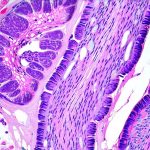Flow cytometry, a powerful technique used across numerous scientific disciplines – from immunology and hematology to drug discovery and plant biology – relies on the precise detection of light scatter and fluorescence emitted by cells or particles as they pass single-file through a laser beam. This technology allows for rapid, multi-parameter analysis, providing insights into cell characteristics like size, granularity, protein expression, and intracellular function. However, despite its sophistication, flow cytometry isn’t foolproof. Artifacts – disturbances or signals not representing true biological features – can arise from various sources during sample preparation, instrument operation, and data acquisition. These artifacts, if misinterpreted, can lead to inaccurate conclusions and flawed research findings. Recognizing the potential for these errors is paramount for any researcher employing this technology.
A critical aspect of flow cytometry interpretation lies in distinguishing between genuine biological signals and spurious artifacts. The complexity of modern flow cytometers, coupled with increasing experimental demands, means that identifying these artifacts requires a comprehensive understanding of both the underlying principles of the technique and the potential pitfalls inherent in each step of the workflow. This article will delve into the risk of overinterpreting flow artifacts, outlining common sources of error and strategies for minimizing their impact on data analysis and interpretation. It’s not about eliminating artifacts entirely – some are unavoidable – but rather about cultivating a critical eye and employing best practices to ensure robust and reliable results.
Understanding Flow Cytometry Artifacts
Flow cytometry generates a wealth of data, but this data isn’t always straightforward. Artifacts can masquerade as biological signals, leading researchers down incorrect paths. These aren’t necessarily failures of the instrument itself; often they are consequences of the experimental design or inherent limitations of the technique. Common sources include: – Doublets – two or more cells appearing as a single event. – Aggregates – clumps of cells triggering multiple signals. – Debris – non-cellular material causing unwanted scatter and fluorescence. – Electronic noise – random fluctuations in the signal. These artifacts can significantly impact data interpretation, particularly when analyzing populations with subtle differences or low expression levels.
The challenge arises because many flow cytometry software packages automatically process data to remove some of these artifacts. While helpful, this automatic processing isn’t always perfect and can sometimes inadvertently eliminate genuine biological signals alongside unwanted noise. For instance, gating strategies designed to exclude doublets might also discard a small subpopulation of cells with legitimate high expression levels. Therefore, it’s vital to understand the limitations of automated processes and to visually inspect data using various scatter plots (like FSC-A vs. FSC-H or SSC-A vs. SSC-H) to identify potential artifacts before performing more complex analyses. The goal isn’t just to get clean data, but to ensure the cleaning process itself doesn’t introduce bias.
Furthermore, the choice of staining protocols and reagents can also contribute to artifact generation. Improper antibody titration, non-specific binding, or inadequate blocking procedures can all lead to false positive signals that might be misinterpreted as genuine expression. Therefore, a thorough understanding of reagent behavior and meticulous optimization are essential for minimizing these sources of error. The importance of including appropriate controls – such as unstained cells, single-stained controls, and isotype controls – cannot be overstated; they provide vital benchmarks for distinguishing between true signal and background noise.
Identifying Common Artifacts Visually
Visual inspection of flow cytometry data is the first line of defense against misinterpretation. Scatter plots are incredibly useful in identifying artifacts based on their characteristic patterns. For example, doublets typically appear higher on forward scatter area (FSC-A) and side scatter area (SSC-A) compared to single cells, but may have lower height values (FSC-H and SSC-H). This difference allows for gating strategies that effectively exclude these events. Debris, conversely, usually exhibits low FSC and SSC signals, appearing as a distinct cloud of events at the bottom left corner of scatter plots.
A key technique to distinguish between true biological signal and artifactual staining is the use of Fluorescence Minus One (FMO) controls. FMO controls are samples stained with all antibodies except one, allowing researchers to determine the level of non-specific binding and define clear gating boundaries for positive populations. Without FMO controls, it can be challenging to accurately identify genuinely positive cells from those exhibiting only background fluorescence. Moreover, careful consideration should be given to the spread of events within each population; excessive variability might indicate aggregation or other artifacts affecting signal quality.
Finally, examining compensation settings is crucial. Compensation corrects for spectral overlap between fluorescent dyes, ensuring accurate measurements. Incorrect compensation can lead to inaccurate assessments of co-expression and potentially misinterpretations of cell populations. Regularly checking and adjusting compensation using appropriate controls will prevent these errors. Remember that a seemingly small error in compensation can significantly impact results, particularly when analyzing multiple colors simultaneously.
The Role of Controls
As mentioned earlier, incorporating appropriate controls is paramount for accurate flow cytometry data interpretation. These controls serve as benchmarks to distinguish between true signal and background noise, helping identify potential artifacts. There are several essential control types: – Unstained cells: Establish the baseline level of autofluorescence. – Single-stained controls: Used for setting compensation parameters. – Isotype controls: Assess non-specific antibody binding. – FMO Controls: Define gating boundaries for positive populations.
The use of biological controls, mirroring experimental conditions but lacking the specific target antigen or treatment, is also highly recommended. These controls help identify any inherent variability within the system that isn’t related to the parameter being measured. It’s not enough simply to have these controls; they must be carefully analyzed and interpreted alongside experimental samples. For instance, comparing the fluorescence intensity of a single-stained control with that of an unstained cell reveals the level of non-specific binding associated with the antibody.
Furthermore, consistency in control preparation is vital. Using batch-matched reagents and following standardized protocols minimize variability between controls and experimental samples. The goal is to create a reliable reference point for interpreting data and avoiding misinterpretations due to uncontrolled factors. A well-designed control strategy significantly increases confidence in the accuracy of flow cytometry results.
Data Analysis Pipelines and Bias
Data analysis pipelines, encompassing gating strategies, statistical analyses, and visualization techniques, can inadvertently introduce bias if not carefully designed and implemented. Gating, while essential for defining cell populations, is inherently subjective; different researchers might draw boundaries differently, leading to variations in data interpretation. To mitigate this, it’s crucial to establish clear and consistent gating criteria based on biological rationale and control samples.
Statistical analyses should be chosen appropriately for the type of data being analyzed and the experimental design. Using inappropriate statistical tests can lead to false positive or false negative conclusions. For example, applying a parametric test to non-normally distributed data can yield inaccurate results. Moreover, it’s important to avoid p-hacking – selectively analyzing data until statistically significant results are obtained – which compromises the integrity of research findings. Pre-registering analysis plans and adhering to rigorous statistical principles minimize bias.
Finally, visualization techniques play a critical role in communicating flow cytometry results. Choosing appropriate plot types (e.g., density plots vs. dot plots) and using consistent color schemes enhance clarity and prevent misinterpretations. Furthermore, providing sufficient context – including details about experimental design, staining protocols, and gating strategies – allows others to evaluate the validity of findings. Transparency in data analysis is essential for maintaining scientific rigor and building trust in research outcomes.
Ultimately, minimizing the risk of overinterpreting flow artifacts requires a multifaceted approach encompassing careful experimental design, meticulous reagent preparation, thorough visual inspection, appropriate control usage, and rigorous data analysis practices. It’s about cultivating a critical mindset and recognizing that even sophisticated technology is susceptible to errors if not wielded with diligence and understanding.





















